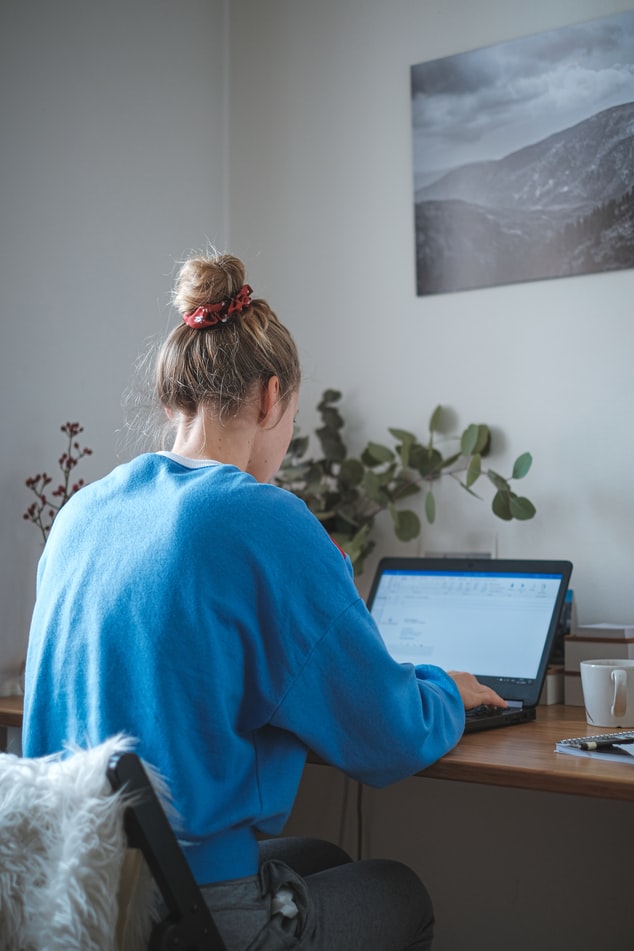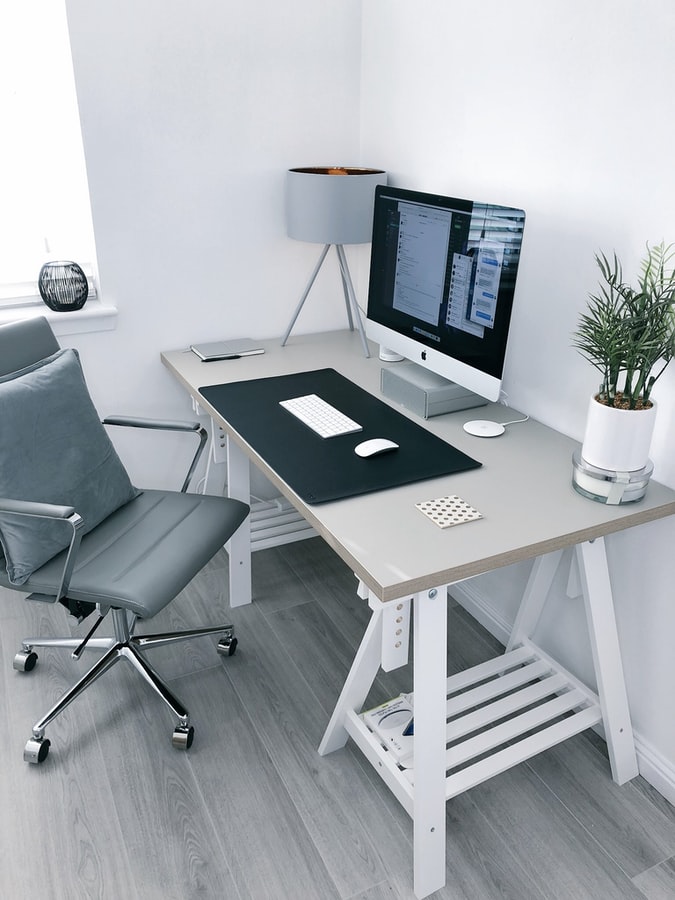Twice as more people are working from home than before the pandemic. The work-from-home economy is promising to reshape how we think about our workplaces, and with no end to the pandemic in sight, many of us might be working from home for a long time.
But while this brings obvious advantages (bye-bye commuting time), there are a couple of issues to deal with. For instance, while our workspace has been designed for work, our homes might not be. You may very well work from your couch, your bed, or even the floor — but your back won’t be happy about it. Most people thought their offices would only be closed for a few weeks, but as the work exodus continues, it’s becoming apparent that we’ll have be working from home for a long time. If this does end up happening, it’s more important than ever to look after yourself.
Working from home allows you to enjoy countless benefits. But, more often than not, your back’s health is sacrificed with this kind of working setup. If you have been experiencing back ache and other related health issues, let this article help.
Here’s how you can prevent back aches when working from home:

Get up and stretch regularly
Too much sitting down is bad for you — even if you exercise. So the first piece of advice to follow is avoid sitting down for prolongued periods of time. The more you sit down, the more likely it is to develop chronic conditions down the road.
The best thing to do is to get up every half an hour or so and stretch a bit, or just walk around (get a cup of tea or some water). A good rule of thumb to follow is the ’20-20-20 rule’, which is meant for your eyes, but could be helpful in more ways than one. The idea is that every 20 minutes, you should get up and take a 20 second break to look at something that’s 20 meters away from you — that’s 65 feet.
Aside from helping you prevent back aches, getting up and stretching when you’re working can also boost your productivity and keep stress at bay. This is especially important for people whose jobs will require them to look at a computer or laptop for long hours.
Posture, posture, posture
You’ve heard it time and time again, but there’s a good reason for it: posture can make or break your back — almost literally. So what’s good posture?
For starters, don’t be a slouch. Slouching adds stress on the spine and a constant slump can have devastating long-term effects not only on your spine, but also on your internal organs (you’re basically adding extra pressure on them). A good way to prevent that is to stand (or sit) up tall — with your shoulders to the back and belly tucked in, always pretend like you’re having your height measured.
If you can’t sit up tall on your own, consider using pillows to support your back. Certain pillows are made to support your back so using this will make it easier for you to prevent back aches in the long run.
It’s not just your back, either. Posture is also about your neck and head, beware of ‘text neck’! When you tilt your head down, that puts pressure on your spine, which can lead to — you’ve guessed it — back pain. This happens especially when we read or write texts and look down. To counter this, try to avoid looking down for prolongued periods, either bring your phone in front of your eyes or try moving your eyes, not your head.
Working from home can ruin your posture, but you can also use this to your advantage. Unlike your workspace, you can tweak your home in any way you’d like, so take advantage of this and make it comfortable and pleasant.
Finding a good chair

Posture can only get you so far if your chair sucks. Thankfully, ergonomic chairs have become common nowadays, and they’re fairly accessible and cheap. It doesn’t have to be the latest brand or the most expensive one (although good ergonomic chairs are not always cheap) — but any chair that is comfortable and offers solid lombar support can make a world of a difference.
Of course, once you get a chair you also have to sit in it properly. If you’re already suffering from back pain, listen to your body and try sitting in a way that isn’t painful or unpleasant, and again, avoid sitting down for too long in a row.
Working from home has become mainstream today, which means that you’ll be able to come across countless businesses that are coping with the demand by selling ergonomic chairs. For you to narrow down your options, make sure to visit the store and try out the chair yourself. This will allow you to determine which kind of chair truly fits your needs and suits your back.
Get a good night’s sleep
A bad back day usually starts in the morning, and that’s often because you’re not sleeping well. Get rid of that old, soft matress and get a firm one that’s good for your back. Pay attention to your position when you sleep and you wake up — are you in a comfortable, healthy position?
If you sleep on your side, it can help to bend the knees, but don’t hug them. If you sleep on your back, don’t use a thick pillow — use slim one that keeps your head at the same level as your body.
Aside from investing in a high-quality mattress, filling your bedroom with comfortable pillows can also help. Pillows can provide the necessary support to your body and relieve pressure. This way, you’ll be able to sleep soundly throughout the night.
Working out helps
A strong back is a healthy back and simple exercises can go a long way. Harvard University has some excellent tips for working out with back pain, but in general, all work outs that don’t cause pain are good. Whether it’s swimming or stretching, it will likely help your back.
Yoga is also excellent for back pain and there are a million programs you can find tailored for a specific pain or ache. Here too, it pays to customize your home for a workout because our homes aren’t just becoming our offices, they’re also becoming our gyms.
There are actually many workout routines that can help relieve your back pain. However, if you want to be successful with your efforts, you should be willing to allocate time and effort for these routines. You won’t be able to get rid of any back aches if you only did yoga for one week and then returned to your unhealthy lifestyle. If you want to see results from your workouts, consistency is key.
If pain persists, have it checked out
We all hate going to the doctor’s especially in this period. But if you’re suffering from back pain and it doesn’t go away, well, ignoring it won’t make it better. As unpleasant as it may be, if the pain doesn’t go away, you should go to the doctor’s and have it checked out.
Depending on the gravity of the problem, your doctor might recommend you to take medicines or undergo procedures such as the Pro Inversion Therapy. Regardless, to ensure that the problem will be resolved in the safest way possible, it’s always best to seek professional advice if your back ache still persists.
In Conclusion
In time, back pain can cause major problems, and it’s always a good time to start taking more care of your back. If you sit at a desk all day long, you’re at great risk of developing back pain, and that pain can turn into something much more troublesome along the way.






